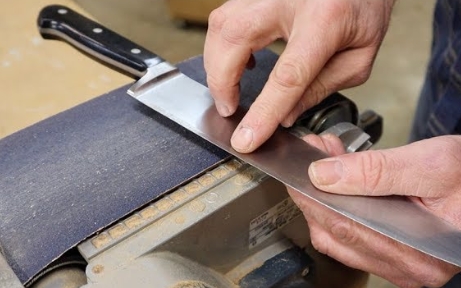Machete vs Axe – Which is better for Chopping Wood and Clearing Brush?
Table of Contents
Anatomy of a Machete and Axe
Before we delve deeper into the differences between machetes and axes, let’s first look at the anatomy of these two tools.
Machete
Machetes usually have a blade length between 12 and 18 inches, with a thickness ranging from 3 to 5 millimeters.
Machetes are made from carbon steel or stainless steel and usually weigh between 1 and 2 pounds.
Axe
Axes have a blade length between 3 and 6 inches and weigh anywhere from 2 to 5 pounds.
Machete Benefits, Drawbacks, and Uses
Machetes are excellent tools for clearing brush and chopping through dense vegetation. They are lightweight; easy to handle, and can quickly chop through thick stems, vines, and branches.
Machetes are also helpful for cutting open coconuts or other tough fruit, often used in agriculture and farming.
However, machetes are not ideal for chopping wood. While they can cut through smaller branches and saplings, axes for splitting logs or chopping larger pieces of wood are more effective. Also, machetes do not have the weight or balance necessary for driving through thick, hardwood trees.
Axe, Benefits, Drawbacks, and Uses
Axes are excellent tools for chopping wood, splitting logs, and preparing firewood. They are heavy, durable, and designed to withstand the rigors of repeated chopping. Axes are also excellent for felling trees and are commonly used in forestry and logging.
However, axes are not ideal for clearing brush or chopping through dense vegetation. Their weight and balance make them challenging to wield effectively in tight spaces, and they can become lodged in dense underbrush.
Also, axes require more maintenance than machetes, as the blade must be sharpened regularly to maintain effectiveness.
Machete vs. Axe – When to Use
Now that we’ve discussed the pros and cons of using a machete and an axe let’s look closer at when each tool is most useful.
When to Use a Machete
Machetes are most useful when clearing brush or chopping through dense vegetation. They are excellent for opening up trails or clearing overgrown areas. They can quickly chop through smaller branches and saplings.
Machetes are also useful for preparing a campsite, as they can quickly chop through vines and underbrush.
When to Use an Axe
Axes are most helpful in chopping wood and preparing firewood. They are designed to split logs along the grain, making them an essential tool for anyone who needs to prepare a fire. Axes are also useful for felling trees but require more skill and experience than a chainsaw.
Which one Should you Choose – Machete or Axe?
A hatchet, a small axe that can double as a hammer and a knife, can be used for light-duty chopping on green wood and can also clear brush efficiently.
If the cutting material is smaller than your wrist, a machete is the tool of choice, while an axe is better for larger material. A machete is excellent for building shelters from brush, while an axe is a king for building a log cabin.
One drawback of a machete is its length, making it clumsy in close workspaces. On the contrary, a hatchet’s blade is only several inches, which limits what can be done with it.
The choice between a machete and an axe depends on the task. A machete is ideal for clearing brush and cutting smaller materials, while an axe is better for larger materials and building structures. A hatchet is a good option for light-duty chopping and can also clear brush efficiently.
Final Words
Both the machete and axe offer unique advantages and disadvantages. While the machete is great for clearing brush and cutting through softer materials, the axe’s weight and power make it better for chopping down trees and splitting wood. Ultimately, the choice comes from your specific needs and preferences. So, whether you’re a seasoned woodsman or just starting, consider what tasks you’ll use your tool for before making your final decision.
Frequently Asked Questions (FAQs)
Which is Better for Survival: a Machete or an Axe?
It depends on the terrain and the tasks required. Machetes are good for clearing paths and chopping vegetation, while axes are better for chopping wood and building shelters.
Can I Use a Machete to Chop Wood?
You can use a machete to chop wood, but it is not as efficient as an axe because machetes are designed for cutting and slicing, not chopping.
What are the Main Differences Between a Machete and an Axe?
Machetes are designed for cutting through vegetation and brush, while axes are better suited for chopping wood and felling trees.











